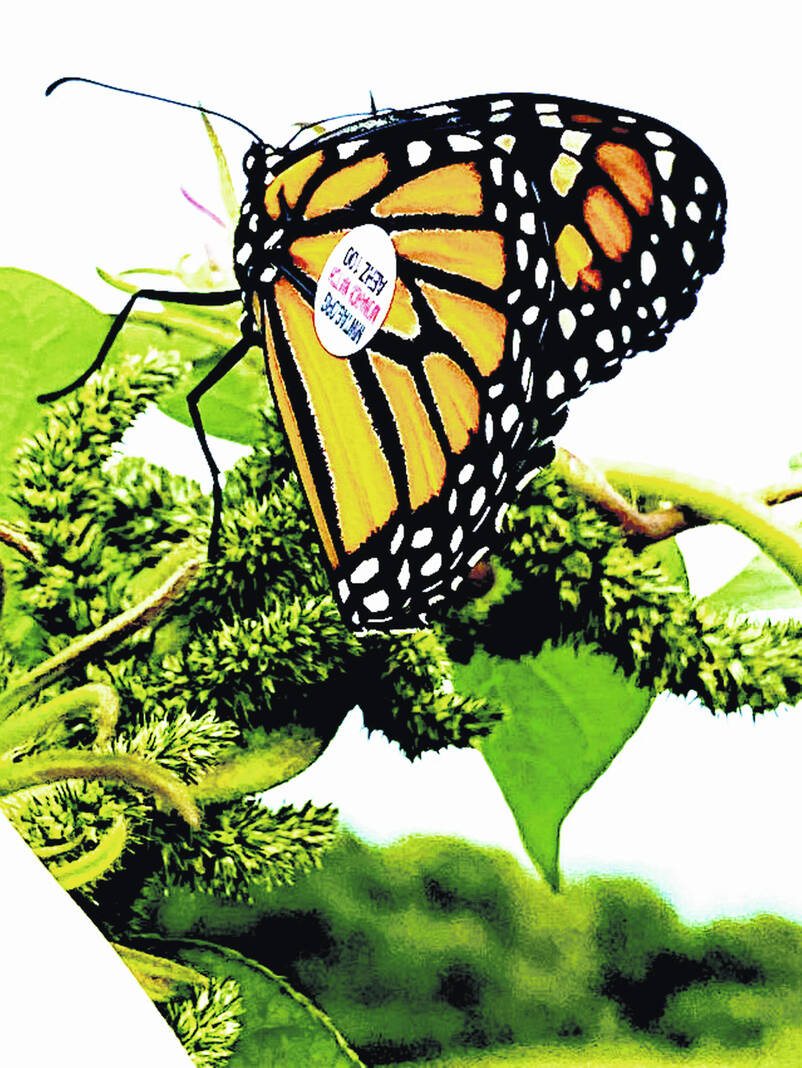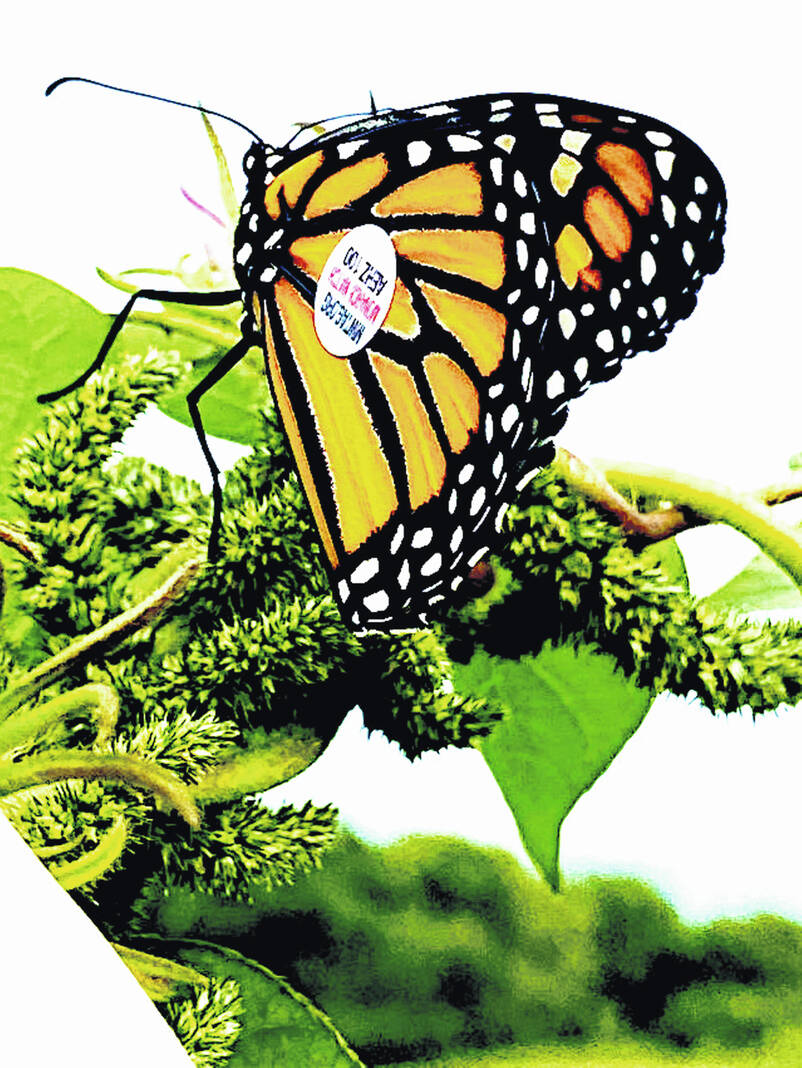

In the fall of 2020, Shirley Shanks, who lives a few miles outside of Greenfield, had her interest piqued by an article in a farming magazine about a man who was raising and releasing about 300 monarch butterflies each year.
Inspired by the story, Shanks began nurturing monarchs and placing tags from Monarchwatch.org on the fully grown butterflies. Last week, she discovered one of the butterflies she released Sept. 21, 2021 was found in Cerro, Pelon Mexico — 2,178 miles from her home.
“It was a male butterfly that made it all the way to Mexico,” said Shanks. “I’ve been scoping out that site because it said all the data would be put in and available in the spring of this year, and I kept checking it and checking it.”
Cerro Pelon has become famous in recent years because of its butterfly sanctuary. Its mountain is an old volcano and is made of volcanic rocks. From November to March each year, the North American monarch butterfly migration takes place where millions of butterflies gather for the winter on the slopes of Cerro Pelon. When the butterflies take to the sky, it is quite noisy and a “storm” made of millions of butterflies can be heard.
“We don’t know how they know to go to Mexico, but they go to the same few trees in Mexico, and all the monarchs from Canada go to the same few trees in Mexico,” said Shanks. “All the monarchs from Canada all the way across America go to the same few trees.”
Shanks said the chances of one of her butterflies being reported found at the end of the migration was slim. “Some get hit by cars, and birds will eat them, and their actual chance of survival from an egg to an adult butterfly is about a 1 percent chance,” she said. “That’s why I think it’s pretty incredible that mine made it to Mexico and was found, so it’s kind of like winning the lottery with no money.”
According to a news release from Monarch Watch, environments conducive to supporting monarchs are declining, and the organization is concentrating its efforts on monarch conservation. Monarch Watch began in 1992 as an outreach program dedicated to engaging the public in studies of monarchs.
“In real estate it’s location, location, location and for monarchs and other wildlife it’s habitat, habitat, habitat,” said Director of Monarch Watch Chip Taylor.
“We have a lot of habitat in this country, but we are losing it at a rapid pace. Development is consuming 6,000 acres a day, a loss of 2.2 million acres per year. Further, the overuse of herbicides along roadsides and elsewhere is turning diverse areas that support monarchs, pollinators and other wildlife into grass-filled landscapes that support few species. The adoption of genetically modified soybeans and corn have further reduced monarch habitat. If these trends continue, monarchs are certain to decline, threatening the very existence of their magnificent migration.”
Between raising monarchs from caterpillars to a chrysalis to a fully formed butterfly, and catching them fully grown, Shanks accumulated about 100 butterflies last year and tagged 50 of them.
“My first year I didn’t do really well, but last year I started keeping the butterflies for 24 hours after they hatch because they come out with their wings wet,” said Shanks. “I keep them for 24 hours before I tag them and release them, and I’ve been very successful doing that.”
She said the butterflies can only grow successfully by being fed milkweed that is free of pesticides.
Of the monarchs, Shanks said, “I know they are great pollinators, and they’re very important to us just like the honey bees.”
Reach John Hackley at 937-402-2571.


